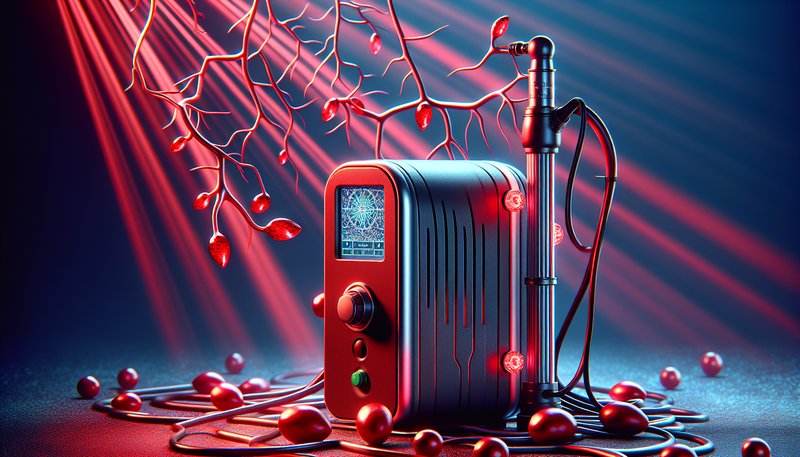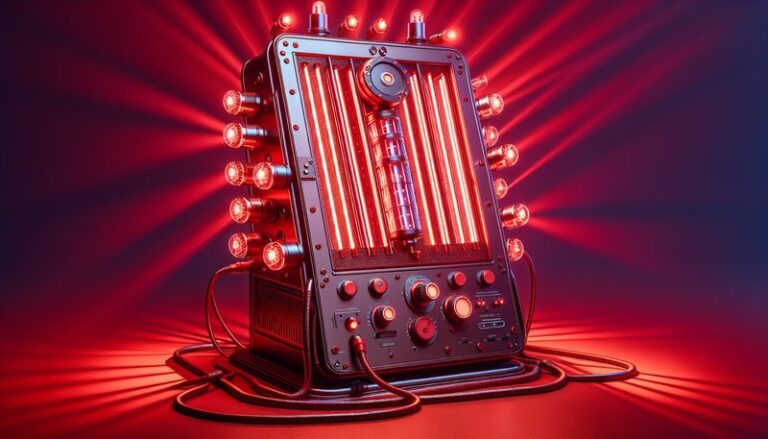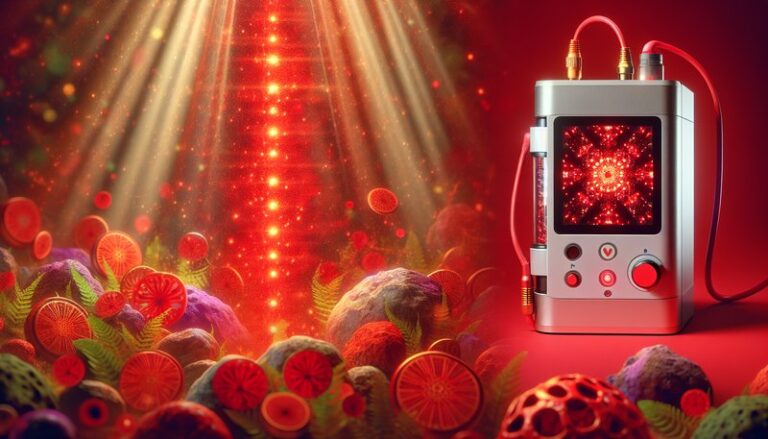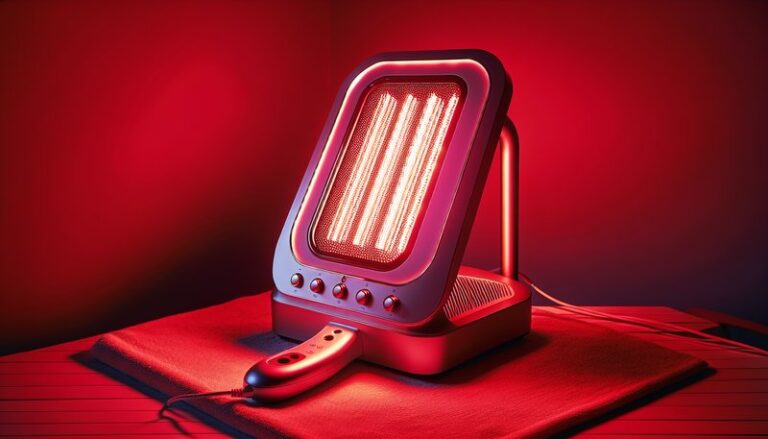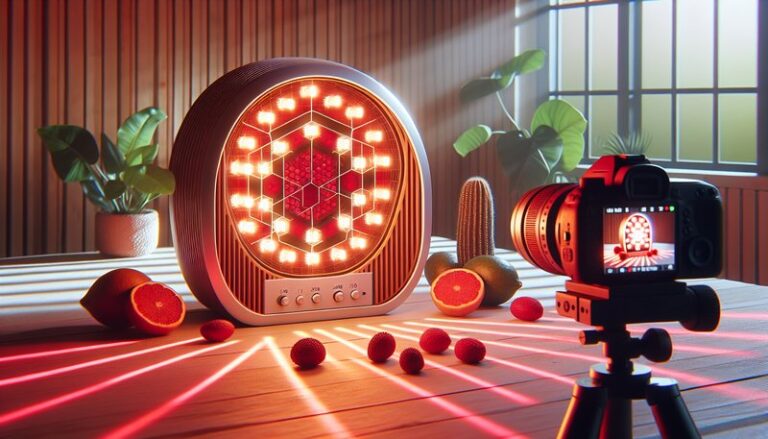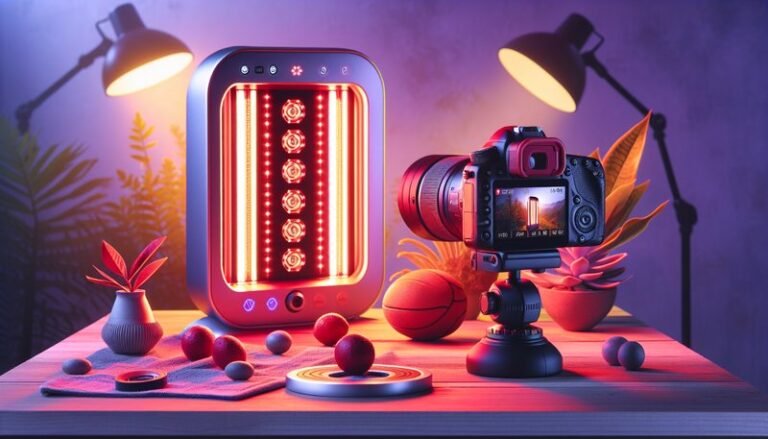Can Red Light Therapy Help Spider Veins?
Can Red Light Therapy Help Spider Veins?
Have you ever noticed the small, twisting blood vessels creeping across your skin? If so, you’re not alone. Many people seek effective treatments for spider veins, and red light therapy is gaining attention as a potential solution. In this article, we will explore what red light therapy is, how it works, its benefits, and whether it can effectively treat spider veins.
Key Takeaways
- Red light therapy may enhance circulation and promote healing, potentially reducing the appearance of spider veins.
- It is generally a non-invasive and painless treatment option with minimal side effects.
- Alternatives to red light therapy include sclerotherapy and laser treatments, each offering varying degrees of effectiveness and comfort.
What is Red Light Therapy?
Red light therapy (RLT) is a clinical treatment that uses specific wavelengths of light to target tissues or conditions in the body. It typically employs low-level laser therapy (LLLT) or broadband light sources to stimulate cellular processes. The primary wavelengths used in RLT, generally between 600 and 900 nanometers, penetrate the skin, enhancing cellular function and promoting healing.
RLT has been utilized for various applications, including skin rejuvenation, pain relief, and injury recovery. It is believed to improve circulation, reduce inflammation, and expedite healing processes by increasing energy production in cells.
Learn the whole story Does Red Light Therapy Lower Inflammation?
What are the Benefits of Red Light Therapy?
Understanding the benefits of red light therapy can illuminate its potential role in treating spider veins. Here are some key advantages:
Enhanced Circulation
One of the significant benefits of RLT is its ability to improve blood circulation. Boosting flow can help diminish the visibility of spider veins and promote overall skin health and vitality.
Promotes Healing and Reduces Inflammation
RLT has been shown to accelerate the healing process for various skin conditions. By decreasing inflammation, it may assist in alleviating discomfort associated with spider veins and support tissue repair.
Non-Invasive and Painless
Unlike more invasive procedures, red light therapy is non-invasive and generally painless. Patients can undergo sessions without the need for anesthesia or significant recovery time.
Supports Collagen Production
By stimulating collagen production, RLT may also assist in improving skin texture and tone, providing a more youthful appearance that can further help mask the visibility of spider veins.
Is it Possible to Treat Spider Veins with Red Light Therapy?
The feasibility of effectively treating spider veins with red light therapy is a topic of active interest in both clinical and home treatment settings. While preliminary studies suggest it may reduce the appearance of these veins, definitive long-term outcomes are still being researched.
What are the Advantages of Using RLT for Spider Veins?
Using RLT for spider veins presents several advantages:
- Convenience: Sessions can often be performed in a spa or clinic, or with at-home devices, offering flexibility for patients.
- Few Side Effects: Compared to other treatments, RLT typically has minimal side effects, making it suitable for various skin types.
- Improvement Over Time: Many patients report gradual improvement, which can be more appealing than immediate, dramatic changes.
What are the Disadvantages of Using RLT for Spider Veins?
Despite its benefits, there are some challenges to consider:
- Variable Results: Effectiveness can vary from person to person, with some may not experience desired results.
- Time Commitment: Patients may need multiple sessions to see substantial improvement, which can be time-consuming.
- Cost: RLT sessions can add up financially, especially if multiple treatments are required.
What are the Things to Consider Before Trying RLT?
Before beginning red light therapy for spider veins, certain factors should be considered:
Check out the details in Red Light Therapy for Acne Benefits
Skin Type and Sensitivity
It’s crucial to assess your skin type and any sensitivity issues. RLT may not be suitable for everyone, particularly those with certain skin conditions.
Current Health Conditions
Consulting with a healthcare professional is essential, especially for individuals with underlying health conditions that could affect treatment safety or efficacy.
Expected Outcomes
Understanding the realistic outcomes and the requirement for multiple sessions can help set appropriate expectations regarding treatment.
What are the Alternatives to Red Light Therapy?
If red light therapy isn’t the right fit, there are alternative treatments for spider veins that may be worth exploring:
Sclerotherapy
This involves injecting a solution into spider veins, causing them to collapse and fade. It is a well-established and effective treatment for many patients.
Laser Treatments
Focused laser therapy uses light energy to target visible veins. This method can be highly effective but may come with more discomfort and downtime compared to RLT.
Vein Stripping
In more severe cases, surgical removal of veins may be necessary. This invasive option may be suitable for significant spider vein concerns but also requires a longer recovery time.
Conclusion: Is it Recommended to Use Red Light Therapy for Spider Veins?
In summary, while red light therapy presents a promising, non-invasive approach to treating spider veins, it is essential to understand that results can vary. For some, it may offer a gentle enhancement to the healing process, while others may find more effective resolution through traditional methods like sclerotherapy or laser treatments. Always consult with a healthcare professional to determine the most appropriate treatment for your specific situation.
Frequently Asked Questions
Is red light therapy safe for all skin types?
Red light therapy is generally considered safe for most skin types. However, individuals with specific skin conditions or sensitivities should consult with a dermatologist before starting treatment.
How many sessions of red light therapy are needed to see results?
While some patients may notice improvement after a few sessions, others might require multiple treatments over a few weeks to achieve desired results.
Can I do red light therapy at home?
Yes, there are at-home red light therapy devices designed for personal use. It’s important to follow the manufacturer’s instructions for safe and effective use.
Does red light therapy hurt?
Red light therapy is typically painless. Patients often describe it as feeling warm or soothing on the skin.
Is red light therapy effective for other skin issues?
Yes, red light therapy has been used to treat various skin conditions, including acne, wrinkles, and scars, in addition to spider veins.
